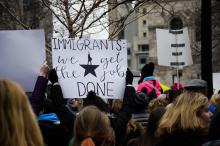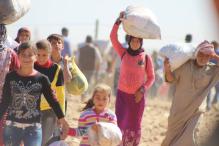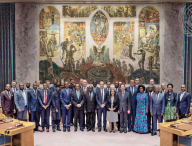“I have been seeking asylum since 2005. I am spat out by the global system. We need life, not back and forth.”
Abdul, a soft-spoken 26 year old Hazara man from Afghanistan, communicated these words from a refugee camp in Indonesia. Having arrived in 2015, he is still waiting for his claim for asylum to be heard, again. Abdul was interviewed for the Becoming Adult project, a longitudinal study of the wellbeing outcomes of those who arrived on their own in England and Italy as children (defined as ‘unaccompanied minors’) and then made the transition to institutional adulthood at the age of 18.
This is the second time Abdul has claimed asylum and been through a protracted period of waiting. Abdul ended up in Indonesia having spent his teenage years in an industrial town in the Midlands, England, from where he acquired and has since maintained a strong regional accent – and love of football. From here, just after his 18th birthday, under the powers provided for in section 10 of the Immigration and Asylum Act 1999, he was forcibly removed by the UK Home Office to Kabul.
So why did Abdul end up in Indonesia? And what can his story tell us about the disjunctures in the global refugee regime?
Ageing Out of Child Protection
Like most unaccompanied asylum-seeking minors arriving in Europe, Australia, Canada and the US, Abdul was in his early teens when he first fled violence in his home country, the discrimination against the Hazara ethnic group being well documented. The particular challenge facing his demographic stems from a poor connection in two intersecting areas of human rights law: child protection law and refugee law. These two frameworks interact in a way that can deliver or impede effective protection in practice for unaccompanied young migrants and refugees, especially as they transition to institutional adulthood at the age of 18.
Everyone has the right to claim asylum and seek recognition as a refugee, but many claims fail to meet the criteria of individualized persecution and are therefore unsuccessful. In Abdul’s case, it was argued that he could avoid threats to his life by relocating to Kabul. But even after his request for refugee protection was unsuccessful, Abdul was able to stay in England on the grounds that he was still a child. This separate protection status, which is distinct from asylum, is granted on the basis of other human rights instruments including the UN Convention on the Rights of the Child (UNCRC) and a series of rights contained in regional bodies of law including the EU Common Asylum System.
Several years followed in which the UK provided Abdul sanctuary and gave him formal rights no different from those of a British child. He was able to study, work, make friends and, by his own description, find a sense of freedom he had never known. But his status was temporary, as were the protections afforded. As the clock struck midnight ushering in his 18th birthday, he transformed from primarily being a child in the eyes of the law to being a previously refused asylum seeker. Within months, he was detained and removed from the UK. Feeling unsafe and with no one to turn to, he used the reintegration money provided by the International Organization for Migration (IOM) to search for a viable future once more, this time in Australia.
The plight of individuals like Abdul is one of pressing international concern because unaccompanied minors continue to move in significant numbers globally. UNICEF estimates that millions of children around the world have been separated from their families. And while the true number is unknown, the Committee on the Rights of the Child has been “observing an increasing number of unaccompanied children in migration and their particular vulnerability.”
Confronted with a lack of viable protection options, these children will grow up to become a population of young adults lost in transition.
Life in Transition
The fact is, Abdul is not alone. Research suggests a high rate of remigration for individuals deported in other parts of the world, including from the US to Latin American countries and from South Africa and Botswana to Zimbabwe, Mozambique, Malawi and Somalia. Many young people who are deported cannot or will not stay in the country of return, but will remigrate, often finding themselves in contexts of transit in overburdened States where UNHCR runs refugee settlement schemes alongside programmes to support local integration and return, such as Indonesia.
“With educational and livelihood opportunities currently on hold due to COVID-19 restrictions, many refugees see resettlement as their only option for a meaningful future. In the absence of prospects to use and develop their capacities, refugees live their lives in limbo, hoping to be resettled to a third country,” said Ann Maymann, Representative of UNHCR in Indonesia.
Now responsible for a wife and two children born in Indonesia, and with no income to provide for them, Abdul is tired of waiting. He is considering turning to smugglers and trying his luck a third time. “Perhaps this time I’ll try for the United States,” he says.
Policy Priorities Better Global Coordination
States have floated a number of possible solutions to the plight of former child migrants to avoid them ending up similarly trapped in the overburdened global refugee regime. These have focused primarily on return, but others offer some hope of successful pathways to integration.
Following the example of the US, which is not party to the UN Convention on the Rights of the Child, European States considered the idea of dealing with the difficult transition to ‘adulthood’ by stopping it from occurring at all. But attempts to systematize returns of unaccompanied minors have not been successful. UNHCR was among those that voiced concerns about a multilateral European Return Platform for Unaccompanied Minors (ERPUM) on the grounds that it breached the rights of the child.
Approaches in France and Italy have yielded encouraging results. Integration in these countries has had some success in the form of extensions of leave for former unaccompanied minors enrolled in work or education. Since his arrival from Afghanistan at the age of 13, Mohammed had become literate and mastered the Italian language. An entrepreneurial young man with a head for business, he was able to take advantage of this provision. Having set up his own sushi business in Rome, he now employs other unaccompanied minors to support them with the transition to adulthood. A representative from the Italian Ministry of Labour commented that former unaccompanied minors like Mohammed are an untapped resource in countries like Italy where there is an ageing population. He is one of several Afghans whose story is told in a new book, Youth Migration and The Politics of Wellbeing, which follows 100 unaccompanied minors during the transition to institutional adulthood.
Post-18 integration pathways were previously formalized by the Council of Europe in a Life Project planning framework, which was endorsed by the EU. But despite its salience in certain (and by no means all) European contexts, this global issue has yet to find a place on the global agenda. The UN system has an opportunity to address the precarious status of this group of youth and their specific vulnerabilities and strengths, building on the unique competencies of UNICEF, UNHCR and UNESCO, agencies which play a central role in shaping youth outcomes within the UN family. Meanwhile, there is a need for more interagency cooperation within the UN system as well as more broadly, as advocated in the Inter-agency Guiding Principles on Unaccompanied and Separated Children.
The UN serves an important monitoring function in various realms, and facilitates important dialogue and multilateral action among States and non-governmental stakeholders. Currently, the data on what happens to unaccompanied minors are scant and poorly coordinated. Through its various migration bodies, such as IOM and UNHCR, and as part of commitments to better data coordination under the new UN Compacts on Migration and Refugees, the UN could support States in managing data of individuals who are returned to assess their livelihood outcomes, providing a hub of information on this topic. States and the UN have committed to improving outcomes for children, particularly in the context of the Sustainable Development Goals related to education, health and the future of work. This data sharing can help ensure those commitments are realized.
The number of child refugees under UNHCR’s mandate has more than doubled in just 10 years. And many of these are unaccompanied or separated children who will soon become young adults. In this context, the UN may consider facilitating the development of guiding principles or recommendations addressing the transition to adulthood of unaccompanied minors and other migrant youth that consolidates the rights of this demographic, and common principles for healthy transitions out of child protection status (see, as a model, the Guidelines on Policies and Procedures in dealing with Unaccompanied Children Seeking Asylum, February 1997). As well as the UN Refugee Convention and UNCRC, this would draw on, among other instruments, the Convention on the Elimination of All Forms of Discrimination against Women, UN Declaration on the Rights of Indigenous Peoples, UN Convention against Transnational Organized Crime and Declaration of Basic Principles of Justice for Victims of Crime and Abuse of Power. This may help States reach agreement on common practices as well as support more comprehensive human rights protections in bilateral and regional agreements where returns are considered the most viable option. Attention should be paid to the shortcomings and strengths of the European Life Project Planning framework.
A number of migration-related frameworks across the UN are well situated to guide and support this dialogue, including the Global Compact on Refugees (GCR) and Global Compact on Migration. To support periodic review of the GCR, UNHCR draws upon three distinct but interconnected initiatives, namely, the Indicator Framework for the GCR, progress towards implementing pledges and initiatives announced at the Global Refugee Forum, and the exercise on measuring the impact of hosting, protecting and assisting refugees. And as UNICEF has stated, “protracted displacement, on average, lasts an entire childhood. With 1 in 2 refugees being a child, the Global Compact for Refugees is essentially for and about children.”
By committing to the 2016 New York Declaration on Refugees and Migrants, states acknowledged the acute risks faced by refugee and migrant children, particularly those traveling on their own, and the need to provide them with specialized protection and durable solutions. It should be recognized more explicitly, however, as UNHCR does in a recent research brief, that planning for the transition to institutional adulthood at 18 is a fundamental ingredient in making any such solution durable or viable in the eyes of the child.
The ideas presented in this blog are based on an event that took place on 10 March 2021, co-hosted by UNU-CPR, the Immigration Initiative at Harvard University, and University College London Institute of Education, where Dr Allsopp's co-authored book, Youth Migration and The Politics of Wellbeing, was launched.
Suggested citation: Dr Jennifer Allsopp., "Lost in Transition: How the UN Can Support a Global Protection Strategy for Unaccompanied Young Migrants," UNU-CPR (blog), 2021-03-04, https://unu.edu/cpr/blog-post/lost-transition-how-un-can-support-global-protection-strategy-unaccompanied-young.




